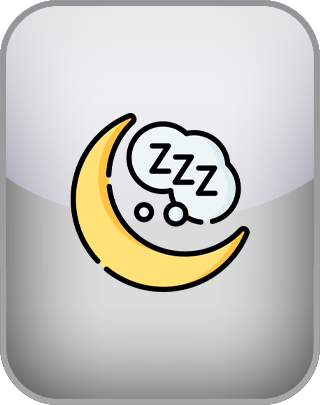Insomnia Severity Index Test (ISI)
The Insomnia Severity Index (ISI) is a 7-item self-report questionnaire developed by Charles M. Morin at Université Laval, Canada, to assess insomnia severity in adults. Published in Sleep (1993), it boasts robust psychometric properties. The ISI evaluates the nature, severity, and impact of insomnia symptoms, including difficulty falling asleep, staying asleep, and daytime functioning. Used in clinical and research settings, it helps clinicians diagnose insomnia by identifying the extent of sleep difficulties and their effects on quality of life.
Question 1 of 7
Instructions: Over the last 30 days:
I have had dissatisfaction with my current sleep pattern.
| Disagree | Agree |
NEXT
The Insomnia Severity Index (ISI) is a widely recognized and psychometrically validated tool used to assess the severity of insomnia symptoms and their impact on daily functioning. Developed by Charles M. Morin and colleagues at Université Laval, the ISI was first introduced in a 1993 issue of the journal Sleep. This 7-item self-report questionnaire is designed to evaluate a broad range of insomnia-related issues, including difficulty falling asleep (sleep onset), staying asleep (sleep maintenance), early morning awakenings, dissatisfaction with sleep quality, interference with daytime functioning, noticeability of sleep problems by others, and the degree of distress caused by the sleep difficulties.
A commonly used clinical cutoff score of 15 effectively differentiates individuals with clinical insomnia from those without, supported by validation research showing a sensitivity of 82% and specificity of 87%. These values indicate strong diagnostic accuracy in both clinical and research settings.
The ISI was developed using both clinical expertise and patient input, which ensures that its content reflects the real-world experiences of people struggling with insomnia. Its internal consistency is excellent, with a Cronbach’s alpha of .90, and it demonstrates good test-retest reliability (.80), meaning it produces stable results over time when symptoms are consistent. It has been validated across multiple populations, including primary care patients, individuals with chronic health conditions, and the general community, which further strengthens its utility and generalizability.
In clinical practice, the ISI is especially useful for screening, diagnosis, and treatment planning, particularly in cognitive behavioral therapy for insomnia (CBT-I). By identifying specific sleep challenges and their daytime consequences—such as fatigue, concentration problems, or irritability—the ISI enables clinicians to tailor interventions to each patient’s unique symptom profile. It is also valuable for monitoring treatment progress and evaluating post-treatment outcomes.
In research contexts, the ISI is commonly used in epidemiological studies, clinical trials, and longitudinal research examining the course and treatment of insomnia. Its brief format, clarity, and robust psychometric backing make it a standard tool in the field of behavioral sleep medicine.
Rooted in Université Laval’s long-standing expertise in sleep research and published in peer-reviewed literature, the ISI continues to be a cornerstone instrument for assessing insomnia. Its capacity to reliably quantify both nighttime symptoms and their daytime repercussions ensures its relevance for advancing both clinical care and scientific understanding of sleep disorders worldwide.
References
- Bastien, C. H., Vallières, A., & Morin, C. M. (2001). Validation of the Insomnia Severity Index as an outcome measure for insomnia research. Sleep Medicine, 2(4), 297–307.
- Morin, C. M. (1993). Insomnia: Psychological assessment and management. Guilford Press.
- Morin, C. M., Belleville, G., Bélanger, L., & Ivers, H. (2011). The Insomnia Severity Index: Psychometric indicators to detect insomnia cases and evaluate treatment response. Sleep, 34(5), 601–608.

